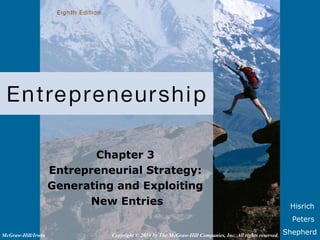This document summarizes key concepts from Chapter 3 of the textbook about entrepreneurial strategy for new entries. It discusses generating new entry opportunities by creating valuable, rare, and inimitable resource bundles. It also covers assessing new opportunities and deciding whether to exploit them. Additionally, it outlines strategies for exploiting new entries such as being a first mover, reducing environmental uncertainty, and reducing customer uncertainty. Risk reduction strategies like market scope strategies and imitation strategies are also summarized.



















